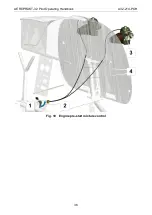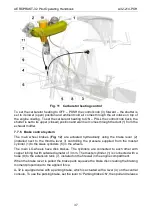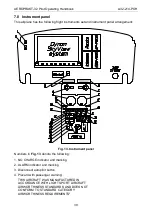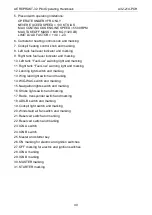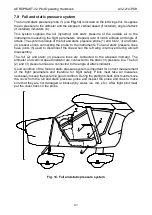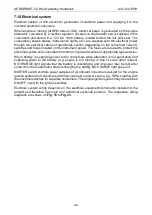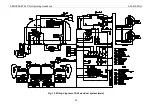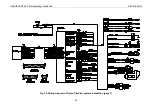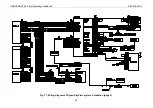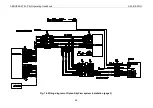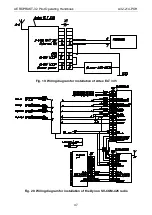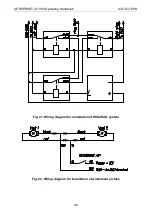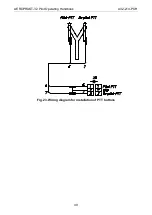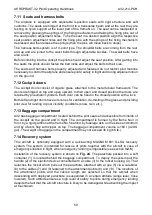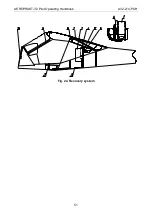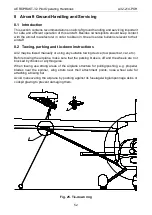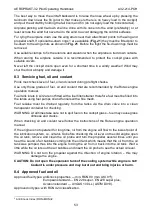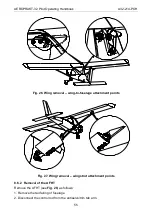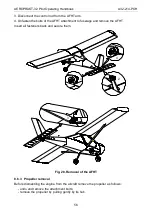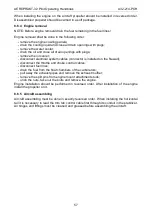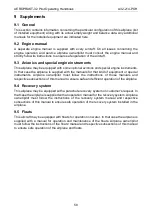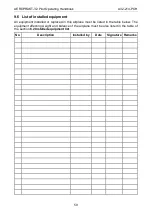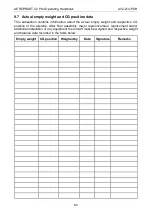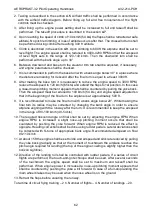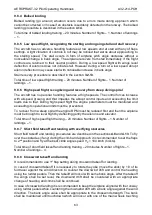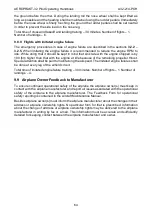
AEROPRAKT-32 Pilot Operating Handbook
A32-214-POH
50
7.11 Seats and harness belts
The airplane is equipped with adjustable 4-position seats with rigid structure and soft
cushions. The seats are hinged at the front to a transverse beam and at the rear they are
resting on nylon support at the lower part of the frame No.3. The seat can be readjusted or
removed by pressing the springs of the fixing mechanism and taking the fixing pins out of
the seat position adjustment holes. To fix the seat in a desired position align the respective
seat position adjustment holes and the fixing pins with the springs of the fixing mechanism
depressed and then release the springs (then the pins will move back to stops).
The harness belts system is of 4-point type. The shoulder belts are coming from the rear
and up and are joined to the waist belts through adjustable buckles. The waist belts have
also a lock.
Before climbing into the cockpit the pilots should adjust the seat position. After getting into
the seats the pilots should fasten the belt locks and adjust the belts to their size.
The seats and harness belts properly adjusted and fastened do not restrict pilot motions
necessary to control the airplane and ensure pilots' safety in flight and during airplane motion
on the ground.
7.12 Cockpit doors
The cockpit doors consist of organic glass, attached to the metal tubular framework. The
doors are hinged on top and open upward. In their open and closed position the doors are
retained by pneumatic cylinders. Each door can be fixed in the closed position with a lock.
Both left and right doors have air scoops for ventilation, de-misting of the glass and providing
pilot view for landing in poor visibility conditions (snow, rain, etc.).
7.13 Baggage compartment
A32 has baggage compartment located behind the pilot seats and accessible from inside of
the cockpit on the ground and in flight. The compartment is formed by the frame No.3 in
front, by a rigid partition at the frame No.5 behind, by fuselage skin on the sides and bottom
and by a fabric flap with zipper on top. The baggage compartment volume is 160 l (42 US
gal). The weight of baggage in the compartment may not exceed 30 kg (66 lb.).
7.14 Recovery system
This aircraft is optionally equipped with a quick-acting MAGNUM 601 S-LSA recovery
system. The system is intended for rescue of pilots together with the aircraft in case of
emergency situation in flight, when emergency landing is impossible (see section
Installation of the recovery system is shown on
. The parachute packed into a soft
container (1) is located behind the baggage compartment. To deploy the system pull the
handle (2) of the ejection device connected with a cable (3) to the rocket housing (4). That
launches the rocket which pulls out the parachute, attached with a rope (5) via a carabiner
(6) to the cables (7) and (9) fastened to the attachment points (8) and (10). The locations of
the attachment points and the cables' length are selected so that the aircraft when
descending with deployed parachute is suspended in a certain attitude (wings level, nose
lowered). Such attitude ensures a high level of safety to pilots during emergency landing
despite the fact that the aircraft structure is likely to be damaged while absorbing the impact
at touchdown.

